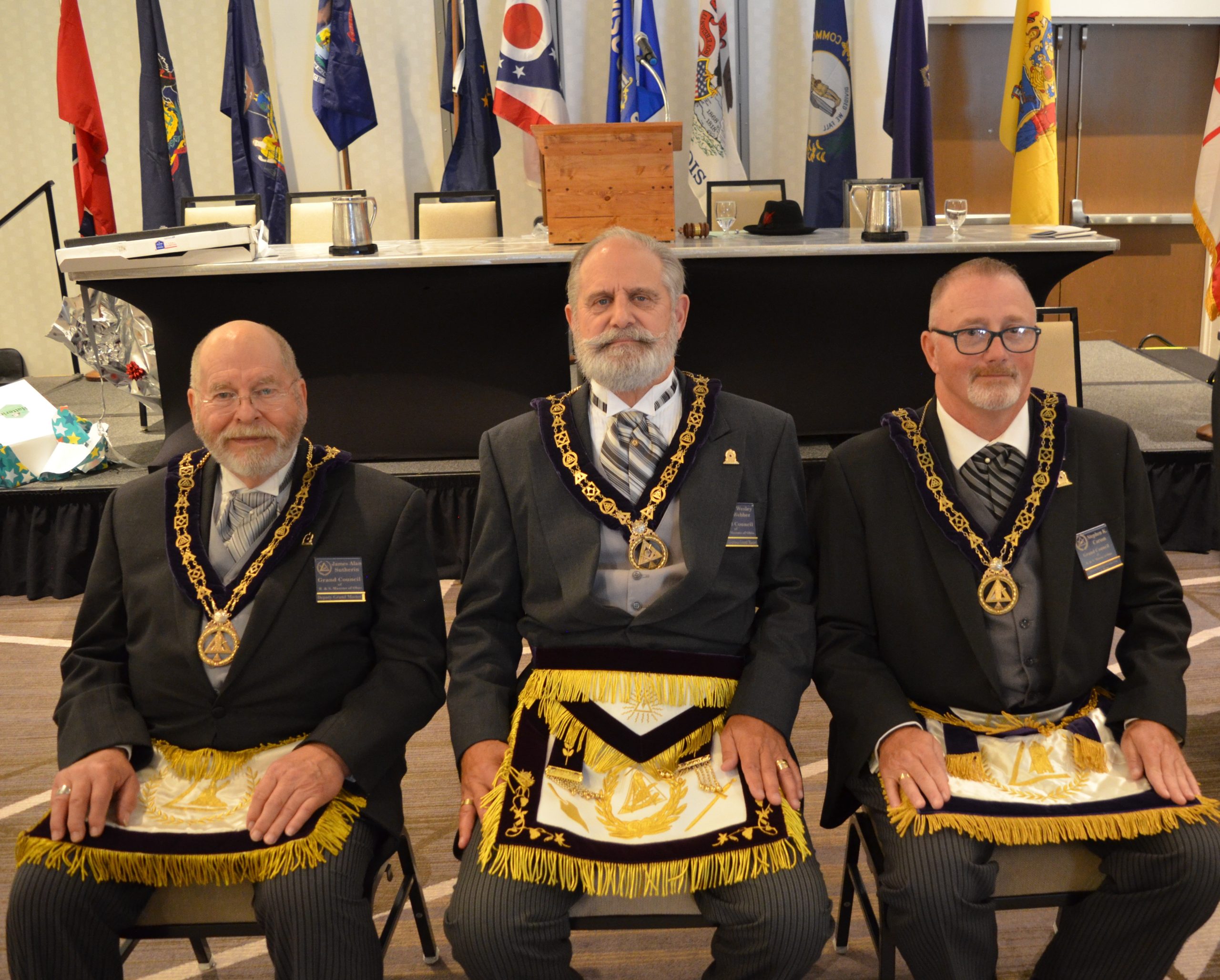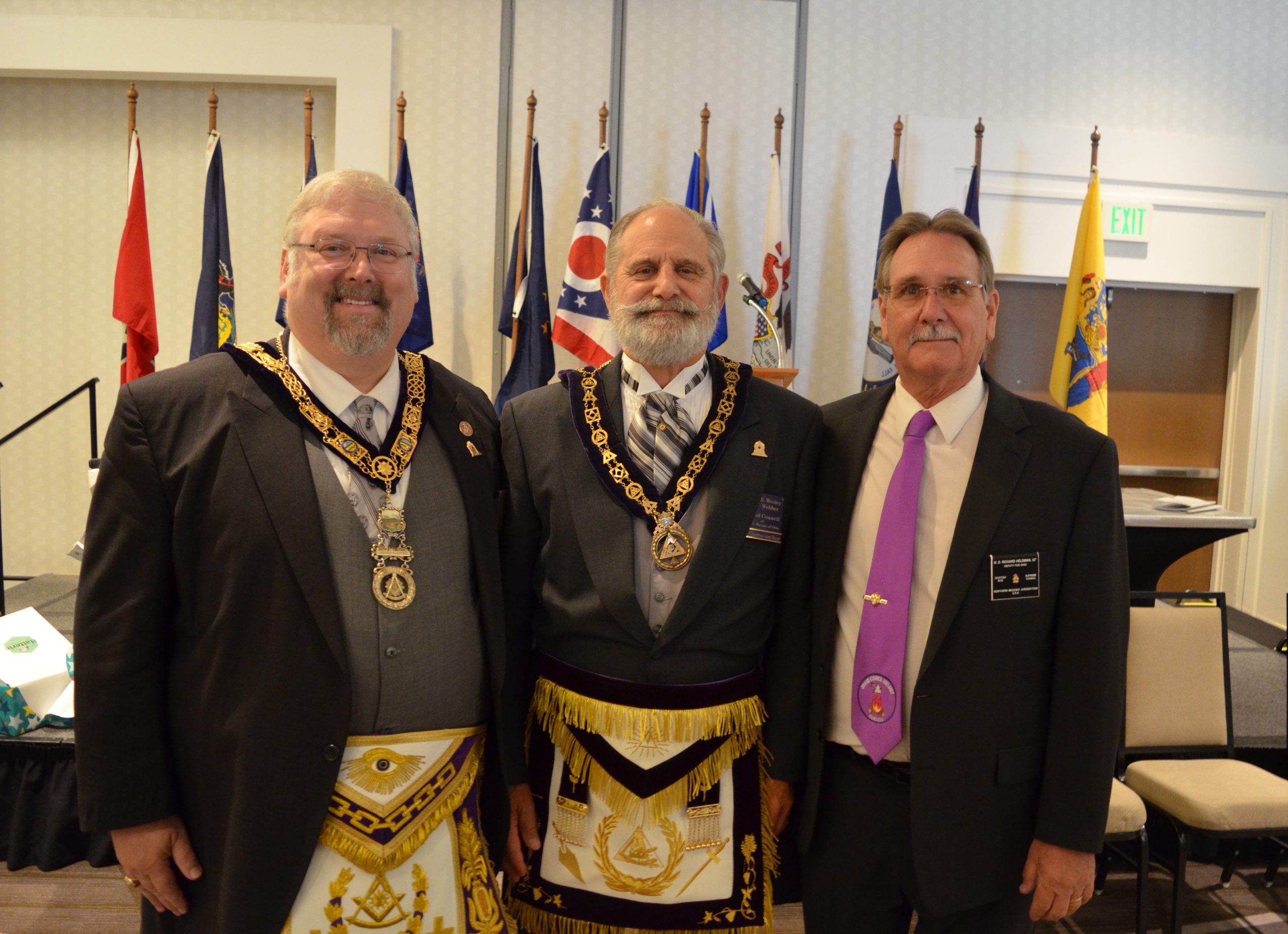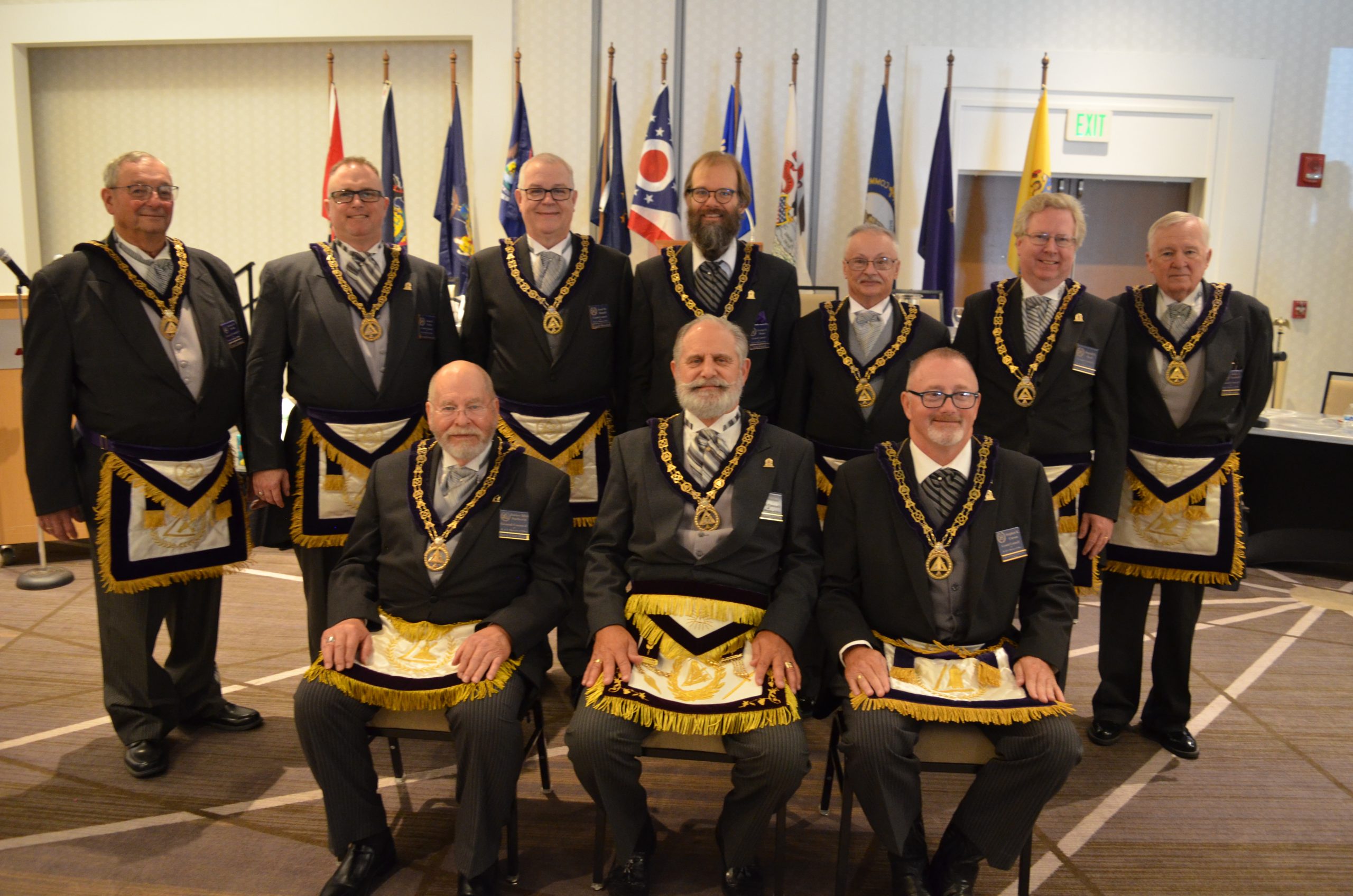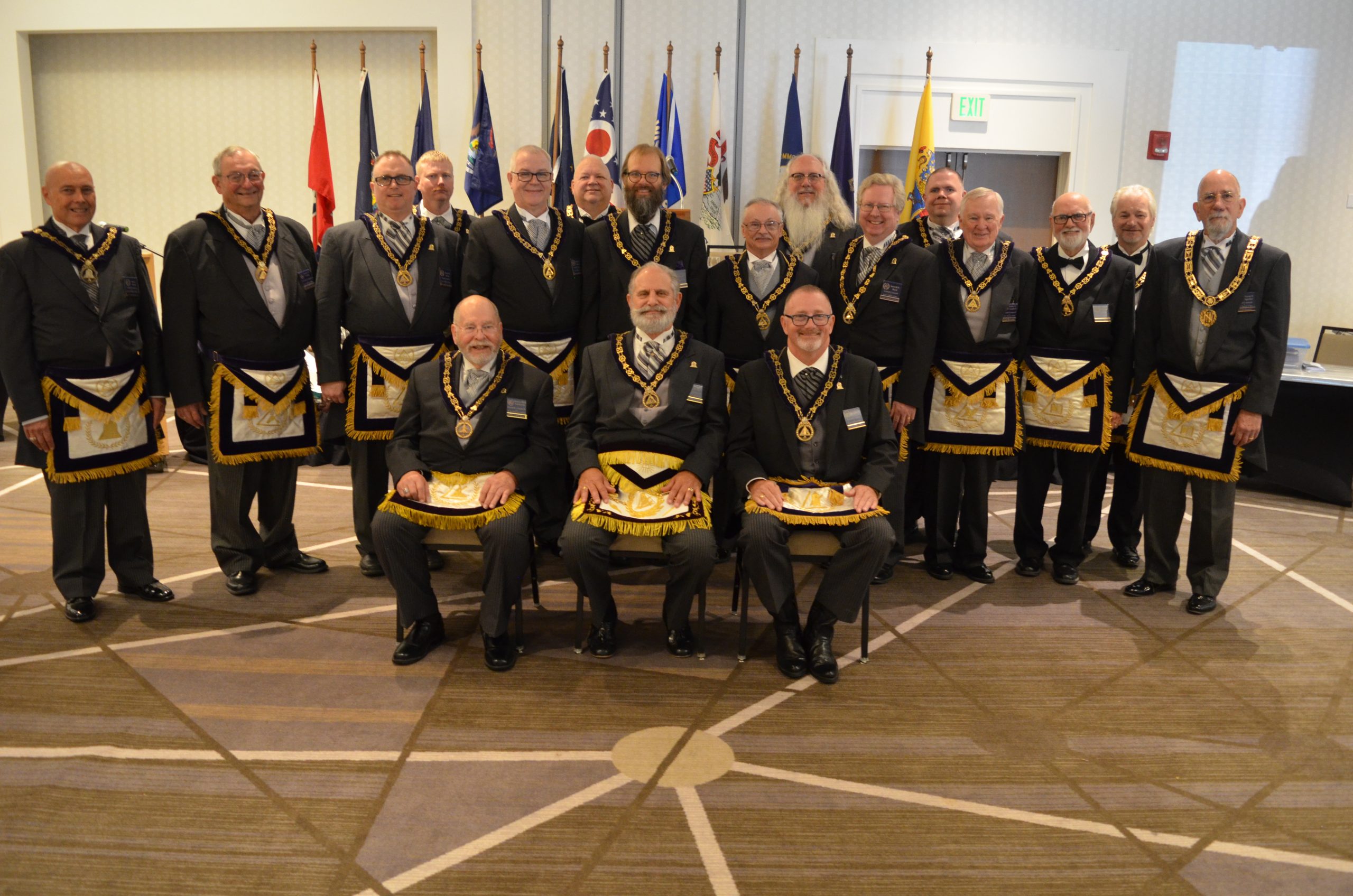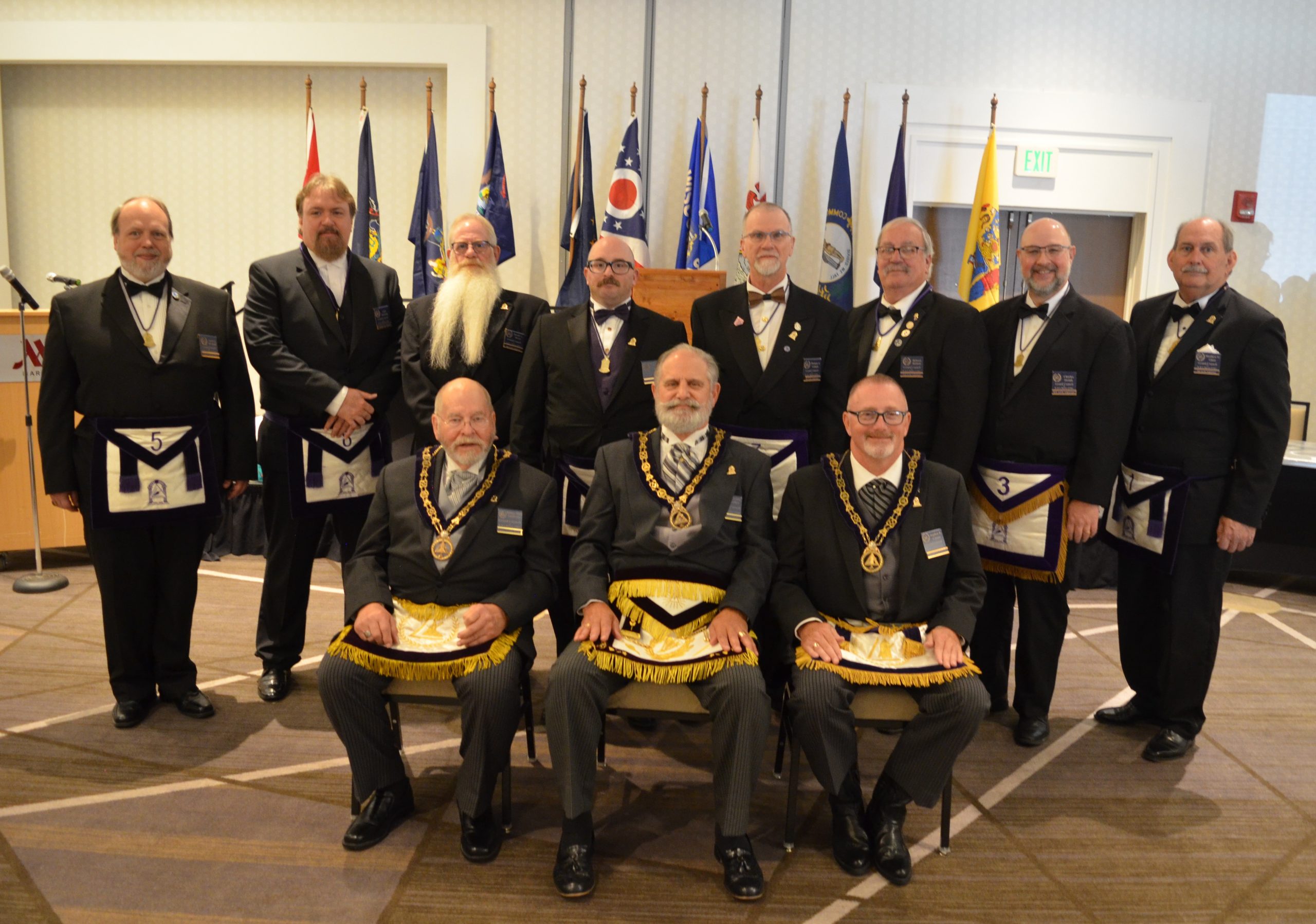The Cryptic Rite
Research is the quest for fact; not truth. In our search for fact we can divide history into two distinct time frames; Historic and Pre-Historic, with Historic representing those claims which can be supported by written evidence, and Pre-Historic as those based solely upon tradition or legend alone. Sadly, a great many of these claims are supported only by tradition. The absence of records, however, is no proof either for or against a tradition. Such absence should place us on guard and warn us not to blindly accept the tradition as an established fact, but however, it does not prove the tradition false.
I offer the following as my belief relative to the origins of our Cryptic Rite.
I am of the opinion that the germ of the Rite was developed in the English Royal Arch of the 1700’s.
Bro. Mitchell, in his History of Freemasonry, Vol I, page 667, asserts that the Select Degree was formerly a part of the Royal Arch system. While he offers no authority for the statement, there is much circumstantial evidence that can be adduced in support of the theory.
About 1724 the Chevalier Andrew Michael Ramsay was selected by James III, the Old Pretender, to tutor his two sons, Charles Edward, also known as the Young Pretender, and Henry. Ramsay in 1737 as the Grand Orator of the Grand Lodge of France delivered the celebrated oration which acted as the incentive for the multiplication of Degrees that followed. It is believed that in France alone several hundred such degrees sprang to life.
The Stuart Theory puts forth the idea that the Cryptic Degrees were used as a cover under which the adherents of the House of Stuart could meet and plot to recover the Throne of Great Britain on behalf of that royal house. Under this theory the Select Master Degree symbolizes the plan of Charles Edward Stuart, also known as the Young Pretender, under the title of James VI. He and Louis XVI, the current King of France are the two Kings represented by Solomon and Hiram of Tyre, together with the Earl of Mars and Nithsdale, and 23 others from Gaul forming the 27 that composed the Conclave. These were the men who were laying the foundations of the return and subsequent reign of the Young Pretender in secret. Remember that the word “select” was applied primarily to the individual Mason and not to the Degree itself, it is the individual that is choice or select. The Select Masters were the true and tried Companions of the Young Pretender and his cause.
According to this theory, the Royal Master is the claimant to the throne of Great Britain. The Lost Word is the Lost Cause, the Secret Vault the Secret place in which they carried on their work for the revival of their cause. Within this vault the Word, symbolizing the Cause and efforts for its revival, was to remain hidden until the time was ripe for it to be revealed.
It may be interesting to note that there is evidence which indicates that the adoption by the Stuarts of the Bee-Hive as a symbol of their resurrection caused the Masons of England to drop the emblem, though its use is still retained in this country as a symbol of industry.
I am inclined to believe that if there was any connection at all, between the House of Stuart and Freemasonry, it was the adoption by the Stuarts of symbols and legends already in use by the Fraternity, rather than the invention, or creation of them by the Stuarts or their supporters.
The Scots degrees seem to have sprung up about 1740 in all parts of France. In 1741 we can find evidence of its reach as far as Berlin, Germany. The Chevalier de Bouneville in 1754 established a Chapter at Paris, France in the Jesuit College of Clermont. The system of Freemasonry practiced by this Chapter became known as the Rite of Perfection or the Rite of Heredom. By the year 1758 the original 7 Degrees had grown to 25 and by 1801 were expanded to some 33 separate Degrees of the Scottish Rite. During this expansion the Select Degree was first included, then dropped, later reclaimed as a detached Degree, and finally dropped once again. One possible reason for the Rite of Perfection in dropping the Select Degree is that its substance is already contained in the 13th and 14th Degrees of that Rite.
In 1802 the newly organized Supreme Council of the Scottish Rite issued a Manifesto setting forth its claims, and listing the degrees over which it claimed jurisdiction; of which the detached Degree of Select Master was one.
The value of a degree is oftimes measured by the character of the men who propagate it or of the organizations which sponsors it. Being ‘Detached Degrees’, those of the council degrees were free to be peddled about as side degrees of the lodge, the chapter, and the consistory.
Select Master Degree
Stephen Morin
Morin was named as Inspector General of the Rite for the New World in 1761, and arrived in the West Indies in about 1762. He communicated his powers to Francken in Kingston, Jamaica at about the same time. There is no record that Morin ever set foot upon the shores of North America.
Henry Andrew Francken
While Francken was responsible for the establishment of a Lodge of Perfection in Albany, New York in 1767, no mention of the degrees of either Royal or Select Master can be found among its records. Francken imparted the Scottish Rite Degrees to one Moses Hays of Massachusetts.
Moses Michael Hays
He received his degrees at the hand of Francken and in 1788 appointed Joseph Myers as Inspector General of the Rite for the State of Maryland.
Joseph M Myers
Myers while in Virginia taught and practiced the degrees of Royal Arch, Holy Royal Arch, Select Master, and Royal Master as the fancy or taste of the Brethren induced them to take an interest. He is also said to have conferred the Select Degree in Rhode Island. Aside from Myers’ activity in the Scottish Rite we know little more about him. However, it is on account of the alleged deposit by him of Rituals of the Cryptic Degrees, at Charleston, South Carolina in 1788 that he has acquired his prominence in Cryptic Masonry. After which time he is not heard of again and it is supposed that he returned to Europe.
It is here that any direct linkage of the Scottish Rite Degrees and/or the Cryptic Degrees ends. However from these 4 men we could conceivably account for the possible existence of the Cryptic Degrees in such diverse locations as the states of New York, Massachusetts, Maryland, Virginia, and Rhode Island.
. Abram Jacobs
Jacobs received from Moses Cohen in Jamaica the Scottish Rite degrees as well as the Select Mason of 27 Degree on November 09, 1790. Jacobs immediately began to exercise the authority given unto him by Cohen. Jacobs came to New York in 1804, where he continued to confer degrees. Thomas Lownds being one of the candidates on which Jacobs completed conferring the degrees.
It is at this point that we venture from the Pre-Historic time frame and into the Historic period as relates to the development and promulgation of the Select Master Degree.
Henry Wilmans
He was a native of Bremen, Prussia where it is supposed that he received his lodge degrees in Silver Key Lodge located in the city of Bremen; but the destruction of the records of this Lodge by fire, prior to 1800, prevents any further verification. He first settled in Charleston, South Carolina about 1788. We do not know how long he lived in Charleston, but he moved to Baltimore in 1792. He established a Lodge of Perfection in the city of Baltimore in 1792 as well as a Grand Council of Select Masters.
The Royal Master and Select Master Degrees seem, originally, to have had no connection with each other and first became known through entirely different instrumentalities in widely separated parts of this country. A union being effected through the efforts of Jeremy L Cross in and about the year 1820. From Schulz’ History of Freemasonry in Maryland, Vol I, page 343 we find the following; Henry Wilmans in the year 1792 erected at the city of Baltimore a Grand Council of Select Masons. By lawful succession the powers so exercised by Wilmans became vested in Philip Eckle and Hezekiah Niles. Where Wilmans obtained his degree or from what source he derived his powers is not known. He seems to have been a man of considerable Masonic standing, and in 1794 was Grand Master of Masons of Maryland.
Philip P Eckel
Eckel, like Wilmans, was a native of Germany. He received the Select Master Degree from Wilmans previous to 1795. Eckle did not receive the degree of Royal Master until 1819 while in New York.
Hezekiah Niles
He received the Select Master Degree from Wilmans.
Thus to Henry Wilmans is generally attributed the recognition of inventing the Select Degree, and its subsequent elaboration to Philip P Eckle.
Royal Master Degree
Stephen Morin
Morin was named as Inspector General of the Rite for the New World in 1761, and arrived in the West Indies in about 1762. He communicated his powers to Francken in Kingston, Jamaica at about the same time. There is no record that Morin ever set foot upon the shores of North America.
Henry Andrew Francken
While Francken was responsible for the establishment of a Lodge of Perfection in Albany, New York in 1767, no mention of the degrees of either Royal or Select Master can be found among its records. Francken imparted the Scottish Rite Degrees to one Moses Hays of Massachusetts.
Moses Michael Hays
He received his degrees at the hand of Francken and in 1788 appointed Joseph Myers as Inspector General of the Rite for the State of Maryland.
Joseph M Myers
Myers while in Virginia taught and practiced the degrees of Royal Arch, Holy Royal Arch, Select Master, and Royal Master as the fancy or taste of the Brethren induced them to take an interest. He is also said to have conferred the Select Degree in Rhode Island. Aside from Myers’ activity in the Scottish Rite we know little more about him. However, it is on account of the alleged deposit by him of Rituals of the Cryptic Degrees, at Charleston, South Carolina in 1788 that he has acquired his prominence in Cryptic Masonry. After which time he is not heard of again and it is supposed that he returned to Europe.
It is here that any direct linkage of the Scottish Rite Degrees and/or the Cryptic Degrees ends. However from these 4 men we could conceivable account for the possible existence of the Cryptic Degrees in such diverse locations as the states of New York, Massachusetts, Maryland, Virginia, and Rhode Island.
Abram Jacobs
Jacobs received from Moses Cohen in Jamaica the Scottish Rite degrees as well as the Select Mason of 27 Degree on November 09, 1790. Jacobs immediately began to exercise the authority given unto him by Cohen. Jacobs came to New York in 1804, where he continued to confer degrees. Thomas Lownds being one of the candidates on which Jacobs completed conferring the degrees.
It is at this point that we venture from the PreHistoric time frame and into the Historic period as relates to the development and promulgation of the Royal Master Degree.
Thomas Lowndes
During the Cerneau controversy, Lownds took the Cerneau side, and affiliated with Cerneau’s Supreme Council. In 1810 Lownds, along with John E Ruckles, and a number of other Brethren met and organized Columbian Council.
Thomas Lownds in 1810 organized in the city of New York a Council of Royal Masters under the name of Columbian Grand Council. Where Lownds obtained his degree is as little known or even less so than where Wilmans received his. In 1806 an Abraham Jacobs conferred several Scottish Rite Degrees upon Lownds, but there is no record to show whether or not either of the Cryptic Degrees was numbered among them.
The first record of Columbian Council, which was organized in September of 1810, uses Scottish Rite Titles and Scottish Rite dates, with the York Rite dates not appearing until August of 1818. While the records of Columbian Council indicate a Scottish Rite connection in the beginning, there seems to have been a growing tendency to establish a close affiliation with Royal Arch Masonry of the York Rite.
In all probability the Royal Master Degree may have been fabricated by Lownds and his associates, and while there have been some prominent changes the spirit of the degree remains intact. To this body of Royal Masters also is ascribed the invention of the Super-Excellent Degree, as it seems to have been first conferred by them about 1825.
To Lownds and Wilman we may directly trace all of the Cryptic Masonry now in use in either hemisphere.
The evidence for the foregoing statement is derived from an old document without any date over the signature of Eckle and Niles. It is generally conceded that Eckle believed himself to be the sole and rightful custodian of the degree of Select Master after the death of Wilmans in 1795. It was in the fall of 1816 that Eckle conferred the degree upon Jeremy L Cross, who had just been appointed as Grand Lecturer of the General Grand Chapter. Cross was so struck with the beauty of the degree, as well as its utility as a complement to the Royal Arch, that he asked for and received permission to disseminate it among Royal Arch Masons. This permission was given by a warrant under the hand of Eckle by the title of ‘Thrice Illustrious and Grand Puissant in the Grand Council of Select at Baltimore’. This warrant was attested to by ‘H Niles as Ill. In the G. Council’. These Councils established by Cross at that time were all assemblies of Select Masters only. In 1818 Cross, in some manner, became possessed of the Royal degree, and he thereupon enlarged ‘the high powers’ in him vested by Eckle to grant charters for Councils of Royal as well as Select Masters.
The popular fallacy that the Cryptic Rite arose out of or formed a part of the Scottish Rite system, either in course or detached, was undoubtedly created by the fact that all of the earlier custodians were ‘Inspectors General’. The Rite of Perfection was introduced into this country by a Stephen Morin, thru
Henry Andrew Francken. Soon after Morin’s removal to St. Domingo, he appointed a number of deputies under the same name, and those in turn appointed others. The subsequent political troubles on that island caused a large exodus to the United States and many of these ‘deputies’ were numbered among them. Upon their arrival here a few settled and permanently remained at Charleston, S.C., while others went on to New York and other cities. They carried with them in some very vague form the elements of the Rite of Perfection and in a limited and rather imperfect manner diffused them to an eager audience. There was neither system nor government of the Rite at that time, and thus every individual Inspector was practically a law unto himself. No effort at organization ever seems to have been made at any place save Charleston, where tradition says a Lodge of Perfection was established, and this city may justly be regarded as the Mecca of the Scottish Rite.
It was not until after the Council degrees had become established in their present forms that the Scottish Rite jumped up and claimed authority of the Royal and Select Master Degrees. But the Charleston body could show but a doubtful title to the Select Degree and was positively without any in respect to the Royal. Finally the Scottish Rite during its session held in Baltimore in1870 formally relinquished all control over the Select Master Degree.
Jeremy L Cross
He knew nothing at all of the history of Masonry, and cared nothing for it. To all questions outside of simply performing the ‘work’ and ‘lectures’, his honest answer was – ‘When you memorize what I am teaching you, then you will know as much about Masonry as I do!’ In 1819 Cross published both his “True Masonic Chart or Hieroglyphic Monitor”, borrowing largely from that of Webb along with a pamphlet monitor of the Council Degrees.
John Barker
Received the Degree of Royal Master on December 15, 1818 in the Council at New Haven, Connecticut, of which Cross was a member.
A few years after Cross had started upon his work a rival appeared upon the field in the person of John Barker, who claimed to be the accredited ‘agent’ of the Southern Supreme Council, A.A.S.R., an authority that has never been substantiated.
Philip P Eckel
He received the degree of Royal Master in 1819 by Ebenezer Wadsworth of New York.
High sounding Masonic titles were easily acquired in those days, and just as easily maintained, as there were none to say nay. The Inspectors assumed the power of creating others at their pleasure, and this power was freely exercised, while still others assumed dignity upon themselves and an assertion of superior knowledge concerning the ‘high grades’. As a rule, the degrees so held, or controlled by each man were imparted in the most informal manner by oral and individual communication. These early vendors of Freemasonry conferred the degrees sometimes for gold and sometimes for glory; actuated by the highest and best of motives on occasion and in the most selfish and sordid in others, yet at all times rendering a most important service for the generations which were to come in the preservation and perpetuation of the old traditions, rites and ceremonies.
Barker, like Cross, was actuated mainly by motives of personal gain. Both sowed the good seed for hire and both made merchandise for the conferral of the degrees. Joseph Meyers, who was the founder of the Charleston Council Princes of Jerusalem, was an itinerant vender of miscellaneous Masonic wares-for a consideration. He traveled extensively, in some kind of mercantile pursuit, carrying his Masonic degrees as a side line. He by no means confined himself to the Rite of Perfection, as his overflowing store would furnish almost anything that was called for.
And so it was with all the high degrees practiced in this country prior to the 1800’s. At that time organization commenced and has since been steadily perfected thereby taking from the itinerant vendor the ability to promote his ‘higher degrees’ and transferring that practice to constitutional authority.
On the whole the evidence seems to point to a French origin based on the English Royal Arch, in common with but earlier than the Scottish Rite. It would appear that the Cryptic Degrees went from France to Germany, and then back again to France, when all trace of it was lost until it re-appeared in America.
By thus considering our origins and tracing our descent, we may safely assert that our extraction is honorable and compares favorably with any of the bodies that came into existence contemporaneously with us. Our growth and development has been upon the lines of freedom that characterizes the York Rite and distinguishes it from all others. Our government is based on the cherished principles of democratic equality first practiced by the Masonic guild, while our symbolism, allegories and moral teachings complete and fully perfect the Masonic system of the American Rite.
Bob S Jones
Chillicothe, Ohio
Fall 2009

